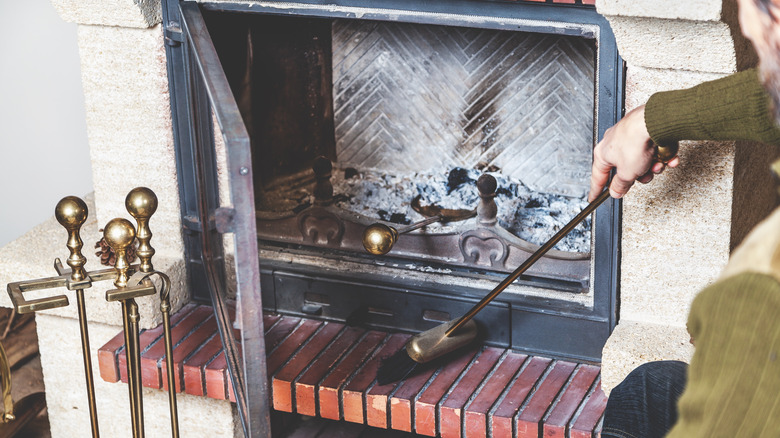Can You Vacuum Up Fireplace Ash?
There is nothing quite like sitting in front of a fire. When temperatures drop and sweater weather is once again upon us, suddenly, our fireplaces seem to call, eager for the moment when we can light them up again. If you have a wood-burning fireplace, however, that anticipation might also be coupled with the dread of all the ash you'll subsequently have to clean up. Ash gets everywhere, and the act of trying to clean it up could spread it into an even bigger mess. Vacuuming doesn't work at all; in fact, because the ash is so fine, it just blows out the vacuum's exhaust fan, circulating it through the air of your home. When it comes to fireplace ash, sweeping is the way to go, but first, you need to moisten it.
If you've ever worked in a mess-prone environment, you've probably seen powder products designed to turn wet, viscous messes into more solid clumps that can be swept up more easily. This is the same concept but in reverse. You're going to use moisture to make the dry, flyaway ash from your fireplace more solid and, hence, easier to remove.
Sweep moistened fireplace ash away to prevent it from entering the air
Used coffee grounds can be surprisingly useful — you can even pour used them on fireplace ash to make cleanup easier. The coffee will dampen and be absorbed by the ash, creating a mixture that's easier to sweep. Any remaining residue can then be wiped away with a sponge or wet cloth.
If you don't happen to have coffee grounds at home, you could also moisten a few paper towels and lay them over the entire ash mess. Leave them there for at least five minutes, then push the edges of the paper towel inward to scoop up as much of the damp ash as you can. Whatever method you choose, the important thing to remember is never to try to vacuum up ash (or coffee grounds, which can clog or damage your machine). Inhaling ash can lead to respiratory irritation and distress, and in its moistened state, it could clog or disrupt a vacuum's motor. Sweeping up damp ash is a more involved process — it takes a little longer and is more labor intensive — but it's the best way to get the job done right.

